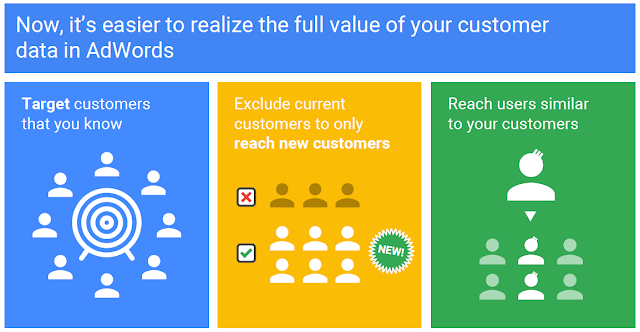What is Audience Targeting in Google Ads?
You can add audience targeting to ad groups and reach people based on who they are, their interests and habits, what they’re actively researching, or how they have interacted with your business. Audience targeting can boost your campaign's performance by reaching people browsing websites, using apps, or watching videos. Read the personalized advertising policy (formerly known as interest-based advertising) to help improve the experience for users and advertisers alike.
How the audience targeting works
For Display campaigns, audiences are groups of people with specific interests, intents, and demographic information, as estimated by Google. When adding an audience to a campaign or ad group, you can select from a wide range of categories—such as fans of sport and travel, people shopping for cars, or specific people that have visited your website or app. Google Ads will show ads to people who are likely in the selected categories.
The data used to generate audiences (for example, page visit history, past Google searches), may be used to improve the bidding and targeting of your audience campaigns.
See the table below for a brief description of the different audience types to use for targeting in your campaigns:
| Campaign type | Audience type |
| Display |
|
| Search |
|
| Video |
|
| Hotel |
|
Different audience targeting options
Once you’ve identified the interests, needs, behaviors, and goals of your audience, you can define who your audience will be for a particular campaign or ad group. You can create an audience, a combined audience, or select audiences that are preconfigured by Google Ads.
Different audience targeting options
Once you’ve identified the interests, needs, behaviors, and goals of your audience, you can define who your audience will be for a particular campaign or ad group. You can create an audience, a combined audience, or select audiences that are preconfigured by Google Ads.
Affinity audiences
Custom affinity audiences
Life events
In-market audiences
Life events
Custom intent audiences
Custom intent: Display
Custom intent: YouTube campaigns
Audience keywords
Remarketing
Detailed demographics
Customer Match
Similar audiences
About dynamic prospecting
Dynamic prospecting is one way to extend the power of your feed-based dynamic remarketing to reach new users with your high-performing products. Unlike dynamic remarketing, which is focused on getting the most value out of your existing customers, dynamic prospecting is used to acquire new users. This difference makes dynamic prospecting the preferable method if you’re a new advertiser or if you’re targeting an audience different from your own first-party data (including your remarketing lists).
Note: If you want to use Retail feeds along with your Smart Display Campaigns, please create a Smart Shopping Campaign or contact your Google Account Representative. Learn more about Smart Shopping Campaigns.
Dynamic prospecting is one way to extend the power of your feed-based dynamic remarketing to reach new users with your high-performing products. Unlike dynamic remarketing, which is focused on getting the most value out of your existing customers, dynamic prospecting is used to acquire new users. This difference makes dynamic prospecting the preferable method if you’re a new advertiser or if you’re targeting an audience different from your own first-party data (including your remarketing lists).
Note: If you want to use Retail feeds along with your Smart Display Campaigns, please create a Smart Shopping Campaign or contact your Google Account Representative. Learn more about Smart Shopping Campaigns.
How it works
Dynamic prospecting uses machine learning to predict which feed items prospective buyers are looking for. Using historical feed performance and user behavior, dynamic prospecting predicts which new users are most likely to perform well for items in your feed. Once the system finds statistically significant relationships between feed items and user intent, it combines that possible intent with demographics-based information such as age and gender to match the user’s intent with a relevant product in your feed. The products in your feed are evaluated and selected based on performance, relevance, and other factors to determine which ones are most likely to lead to conversions.
Smart Display campaigns are recommended for dynamic prospecting campaigns since they can simply and easily combine dynamic remarketing users with prospecting users for an effective full-funnel setup.
Dynamic prospecting uses machine learning to predict which feed items prospective buyers are looking for. Using historical feed performance and user behavior, dynamic prospecting predicts which new users are most likely to perform well for items in your feed. Once the system finds statistically significant relationships between feed items and user intent, it combines that possible intent with demographics-based information such as age and gender to match the user’s intent with a relevant product in your feed. The products in your feed are evaluated and selected based on performance, relevance, and other factors to determine which ones are most likely to lead to conversions.
Smart Display campaigns are recommended for dynamic prospecting campaigns since they can simply and easily combine dynamic remarketing users with prospecting users for an effective full-funnel setup.
Example
Imagine you're a hotel provider, and a customer wants to take a vacation in Paris. This customer is researching many topics about Paris, such as its cultural attractions, restaurants, hotels, and flight options. Since you have enabled dynamic prospecting, every new bit of relevant information in this user’s journey that indicates their travel intent to Paris, helps Google's systems know that showing your Parisian hotels to this customer is more likely to lead to a relevant, assistive-style ad that this user may be more likely to convert from.
Imagine you're a hotel provider, and a customer wants to take a vacation in Paris. This customer is researching many topics about Paris, such as its cultural attractions, restaurants, hotels, and flight options. Since you have enabled dynamic prospecting, every new bit of relevant information in this user’s journey that indicates their travel intent to Paris, helps Google's systems know that showing your Parisian hotels to this customer is more likely to lead to a relevant, assistive-style ad that this user may be more likely to convert from.


